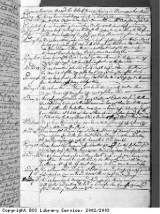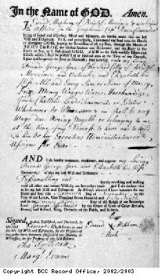Slave ship journals
Many British ships made the journey to West Africa to trade for enslaved African people. Once on board, the enslaved Africans would be taken across the Atlantic Ocean to the Americas where they would be sold to the plantation owners who needed them to work on the plantations there. The ships would then load up with new cargo for the last leg of the journey back to Britain. They would be taking back goods (such as sugar and tobacco) that were grown by the slaves on the plantations. Life on board the slave ships was harsh.The captains were often cruel. The enslaved Africans and the crew suffered from the poor conditions and treatment. Disease was common and many could die on the journey.
There are many accounts that tell us about the journey taken by slave ships across the Atlantic Ocean from Africa to the Americas. Some are the records of the voyage kept by the captain in the ship’s logbook. This records everything about life aboard the slave ship. It tells us about the weather throughout the day, the ship’s course, punishments handed out to crew or enslaved Africans, the rations given out to the slaves, and any deaths or sickness.
Other accounts include those written by individuals telling of their own experiences on board the ship. Two famous and important individual accounts are those written by Olaudah Equiano and Ottobah Cuguano, Africans who had been enslaved. It is rare to hear a first hand account from an enslaved African. Few of the slaves had the opportunity to learn to read and write, and so few could tell their story to the wider world.
Often the members of the crew were also unable to read or write, which means that few individual accounts written by sailors exist. Many sailors wrote their will before setting out for Africa and were usually unable to sign their own name to it. They might have put a cross instead as a signature. Pictured here is the will of a sailor called Edward Mapham from Bristol. Unable to read or write he ‘signed’ his will with a cross. There are, however, a few first-hand accounts written by sailors, describing their experiences in the slave trade.
The more educated members of the slave ship’s crew could often read and write. One of the accounts below, of how slaves were purchased, comes from someone who was working in the slave trade as a ship’s surgeon. James Arnold was keeping a journal of his experiences that could be used by those campaigning to end the slave trade. Arnold, from Bristol, gave evidence to a committee of the Houses of Parliament, based on his experience on a slaving voyage in 1787. He had been asked to speak by Thomas Clarkson, the leader of the movement to abolish the trade in slaves.
The accounts in the sections below come from different people who experienced life at sea on the slaving voyages. Pieced together, these accounts can tell us a lot about life aboard the slave ships.




